
Pieter Bruegelthe Elder was the most significant artist of Dutch and Flemish Renaissance painting, a painter and printmaker, known for his landscapes and peasant scenes ; he was a pioneer in making both types of subject the focus in large paintings.

Ship of Fools is a painting by Hieronymus Bosch, now in the Musée du Louvre, Paris. Camille Benoit donated it in 1918. The Louvre restored it in 2015. The surviving painting is a fragment of a triptych that was cut into several parts. The Ship of Fools was painted on one of the wings of the altarpiece, and is about two-thirds of its original length. The bottom third of the panel belongs to Yale University Art Gallery and is exhibited under the title Allegory of Gluttony. The other wing, which has more or less retained its full length, is the Death and the Miser, now in the National Gallery of Art, Washington, D.C. The two panels together would have represented the two extremes of prodigality and miserliness, condemning and caricaturing both. The Wayfarer(Rotterdam) was painted on the right panel rear of the triptych. The central panel, if it existed, is unknown.

Municipal Museum Boijmans Van Beuningen is an art museum in Rotterdam in the Netherlands. The name of the museum is derived from the two most important collectors of Frans Jacob Otto Boijmans and Daniël George van Beuningen. It is located at the Museumpark in the district Rotterdam Centrum, close to the Kunsthal and the Natural History Museum.
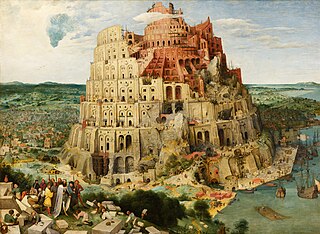
The Tower of Babel was the subject of three paintings by Pieter Bruegel the Elder. The first, a miniature painted on ivory, was painted while Bruegel was in Rome and is now lost. The two surviving paintings, often distinguished by the prefix "Great" and "Little", are in the Kunsthistorisches Museum, Vienna and the Museum Boijmans Van Beuningen in Rotterdam respectively. Both are oil paintings on wood panels.

The Wayfarer is an oil on panel painting by Hieronymus Bosch, created c. 1500. It is currently in Museum Boijmans Van Beuningen in Rotterdam. This painting is round and 71.5 cm (28.1 in) in diameter. It is one of the fragments of a partially lost triptych or diptych, which also included the Allegory of Gluttony and Lust, the Ship of Fools and Death and the Miser.

Hans Bol or Jan Bol, was a Flemish painter, miniature painter, print artist and draftsman. He is known for his landscapes, allegorical and biblical scenes, and genre paintings executed in a late Northern Mannerist style.
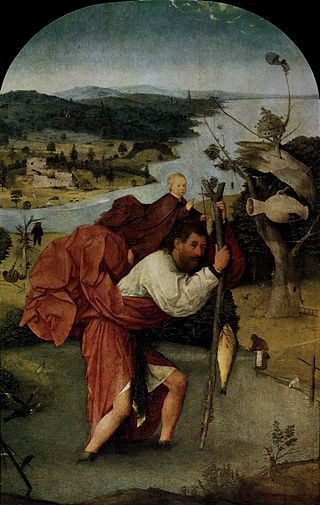
Saint Christopher Carrying the Christ Child is an oil on panel painting by Dutch painter Hieronymus Bosch, dating to c. 1490-1500. It is held at the Museum Boijmans Van Beuningen in Rotterdam.
Head of a Woman is a fragment of a Hieronymus Bosch painting, created c. 1500. It is currently in the Museum Boijmans Van Beuningen in Rotterdam, Netherlands. The fragment is only 13 cm tall and 5 cm wide.
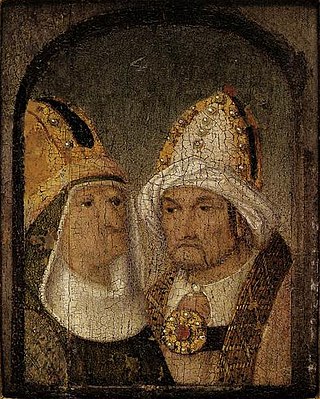
Two Male Heads is an anonymous painting formerly attributed to Hieronymus Bosch. It is currently in the Museum Boijmans Van Beuningen in Rotterdam.

Rob Scholte is a Dutch contemporary artist. From 1977 to 1982 he studied at the Gerrit Rietveld Academie, Amsterdam. His work consists of reproductions of images from the media and from art history. He lives and works in Den Helder.

Hieronymus Cock, or Hieronymus Wellens de Cock was a Flemish painter and etcher as well as a publisher and distributor of prints. Cock is regarded as one of the most important print publishers of his time in northern Europe. His publishing house played a key role in the transformation of printmaking from an activity of individual artists and craftsmen into an industry based on division of labour. His house published more than 1,100 prints between 1548 and his death in 1570, a vast number by earlier standards.
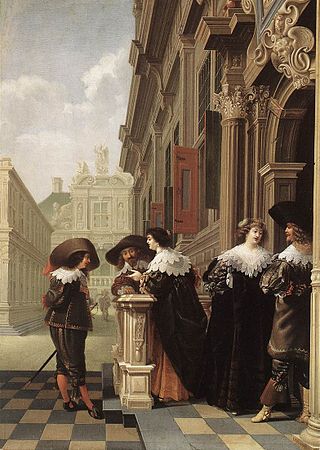
Dirck van Delen or Dirck Christiaensz van Delen was a Dutch painter who specialized exclusively in architectural paintings, principally depicting palace perspectives and church interiors.

Concert in the Egg is a painting formerly considered to be a copy of a lost work by Hieronymus Bosch, and which is currently considered to be based on one of his drawings. Max Jakob Friedländer called it 'an old copy', without specifying another work it was copied from.

Peeter Baltens, Pieter Balten or Pieter Custodis, was a Flemish Renaissance painter, draughtsman, engraver and publisher. Baltens was also active as an art dealer and poet. He was known for his genre paintings, religious compositions and landscapes.

The Fall of the Rebel Angels is an oil-on-panel painting of 1562 by the Netherlandish Renaissance artist, Pieter Bruegel the Elder. The painting is 117cm x 162cm and is now in the Royal Museums of Fine Arts of Belgium in Brussels, Belgium. The Fall of Rebel Angels depicts Lucifer along with the other fallen angels that have been banished from heaven. Angels are falling from the sun in a stacked manner along with ungodly creatures that Bruegel created. This piece by Bruegel was previously thought to be by Hieronymus Bosch. Bruegel was influenced by a variety of artists such as Albrecht Dürer, Frans Floris I, and Hieronymus Bosch. He also got ideas for the creation of his creatures in his previous works.
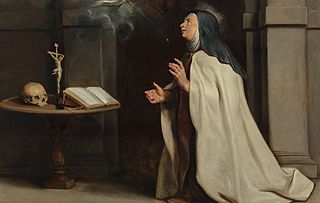
Saint Teresa of Ávila's Vision of the Holy Spirit is a 1612-1614 painting by Peter Paul Rubens. It is now in the Museum Boijmans Van Beuningen in Rotterdam.
Daniël (Daan) van Golden was a Dutch artist, who has been active as a painter, photographer, collagist, installation artist, wall painter and graphic artist. He is known for his meticulous paintings of motives and details of everyday life and every day images.

Pieter van der Heyden was a Flemish printmaker who is known for his reproductive engravings after works by leading Flemish painters and designers of the 16th century.

The Flood Panels are two double-sided painted panels attributed to Hieronymus Bosch, dating to c. 1514 and now in the Museum Boijmans Van Beuningen in Rotterdam.
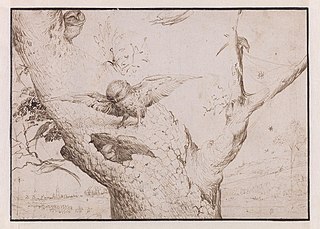
The Owls' Nest is a drawing by Hieronymus Bosch, now in the Museum Boijmans Van Beuningen.


















